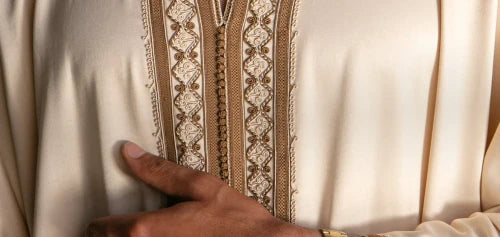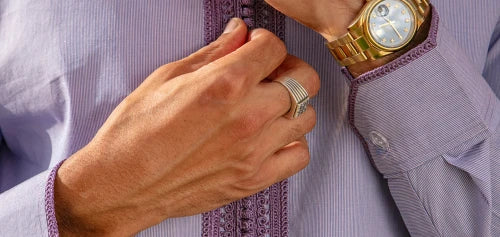From its vibrant cities to the intricate artistry of its embroidery and leatherwork, Morocco is a land rich in history and culture. For centuries, it has served as a crossroads of Arabic, African, and European influences, creating a diverse cultural landscape. Among the many fascinating crafts that have emerged from this blend of traditions are Morocco’s iconic Balgha, also known as Sherbir or babouches. These traditional shoes are a testament to Morocco’s skilled artisanship, fusing cultural heritage with practical, beautifully crafted footwear that is now beloved around the world.
What is the Balgha?
The Moroccan Balgha is a flat slipper looking, open-back shoe resembling modern mules, crafted without heels and boasting a pointed or rounded toe.

Made from supple leathers like goat, cow, camel, or sheep hides, their name derives from the Arabic "babush" and Persian "papush," highlighting the blend of influences typical of Morocco. The process begins with cleaning, drying, and dyeing the leather using traditional plant-based methods. Artisans in Marrakech and Fez handcraft the slippers, skillfully stitching the soles to the uppers. Some balghas are adorned with embellishments like embroidery, sequins, or jewels for a more luxurious look. Each pair reflects the craftsmanship and traditions passed down through generations. Its simplicity in design contrasts with its cultural importance, symbolizing both comfort and elegance.
The Moroccan Balgha is more than just a pair of shoes—it’s a cultural emblem deeply rooted in Moroccan heritage. These traditional leather slippers have been worn for centuries by men, women, and children, not only for special occasions such as Eid and weddings but for daily use as well.
How It's Made

The creation of Balgha is an intricate process that begins with selecting the highest quality leather. Artisans handcraft these slippers using leather from cows, goats, or camels, which is tanned, dyed, and shaped to form the soft yet durable footwear. For men, Balghas are often made in neutral tones such as beige or brown, while women's Balghas are more elaborate, featuring bright colours, embroidery, and sometimes even sequins.
The sole is typically made from durable leather, while the upper part is soft and flexible, allowing the wearer comfort in hot or cool climates. The skill involved in tanning the leather and stitching the shoe is a key part of Morocco’s artisanal traditions, making each pair a unique piece of work.

The Origin of Balgha
The Balgha’s origins can be traced back to centuries ago, evolving as a symbol of both practicality and status. In the past, these slippers were worn by people of all social classes, from royalty to villagers. Traditionally, they were seen as a luxury item, often embroidered and decorated for special occasions, making them a key part of Morocco’s festive and ceremonial attire.

For Women, Men and Children
Balgha are made for men, women, and children, and their significance remains across generations. Men often wear simpler designs, while women’s Balghas are more decorative and glamorous, especially when paired with matching handbags for special events. Whether worn with a djellaba, caftan, or jabador, the Balgha completes the traditional look. Today, you can find women’s versions made in silk or satin with vibrant colours, sold with matching handbags, perfect for weddings and glamorous events.

Modern Popularity
While the Balgha is steeped in tradition, it continues to evolve in modern Moroccan culture. Nowadays, it is not uncommon to see Balghas being worn casually with jeans, blending traditional craftsmanship with contemporary fashion. The versatility of these shoes keeps them a popular choice for Moroccans, not only for special occasions but also as an everyday statement of cultural pride.

Conclusion
The Moroccan Balgha is a reflection of history, craftsmanship, and identity. Whether worn for daily comfort or as part of a ceremonial outfit, the Balgha stands as a testament to Morocco’s enduring traditions, blending the old with the new. From the artisans who carefully handcraft them to the individuals who wear them proudly, the Balgha continues to play a vital role in Moroccan fashion and culture.
The balgha has also captured the imagination of designers globally, inspiring many to reinvent the traditional slipper. One of the most iconic interpretations came from Phoebe Philo for the Celine Resort 2016 collection, with Vogue naming it the ‘it’ shoe of the year. This spurred other designers like Le Monde Beryl to create their own versions, including luxurious velvet slippers.
At Awaraaf, we adore the balgha for its perfect balance of comfort and style, we love how it completes the traditional Moroccan look during special celebrations while at the same time reflecting a simple yet elegant lifestyle that emphasizes creativity and positivity.









